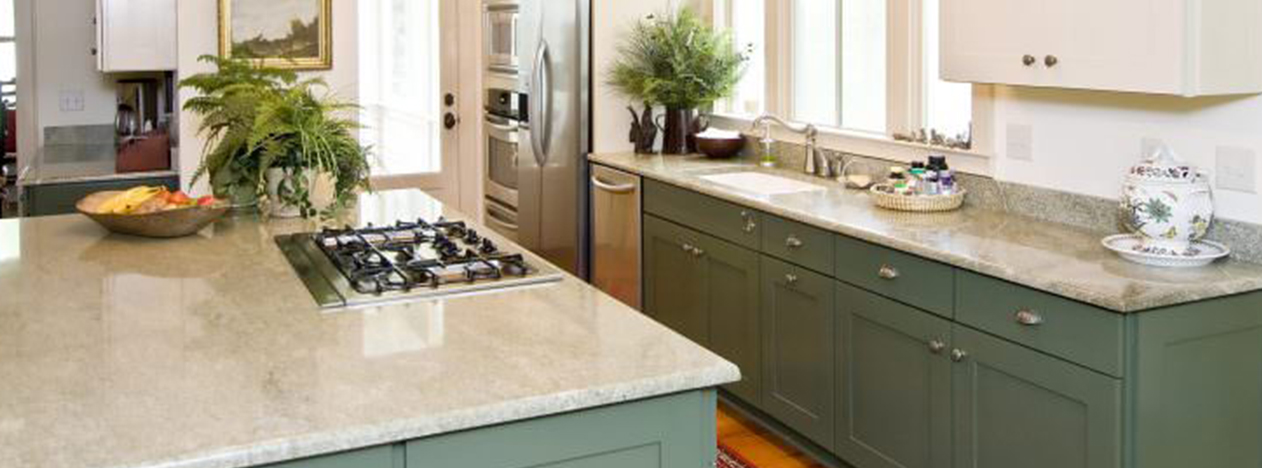
10 Mistakes You Make in Cabinet Painting
Posted on March 11, 2019
Pinterest touts cabinet painting as an affordable way to update your kitchen. The prospect of painting kitchen cabinets seems easy enough, but many DIYers have fallen into the pit of despair mid-project. That being said, here are the 10 mistakes you make in cabinet painting.
1. This is a weekend-long project.
Adding a new color to your kitchen cabinets will change the look of the room. Imperfections in the cabinets will still show through. You are not going to get the pristine outcome of new kitchen cabinets through painting them. Sometimes paint can make the flaws stand out even more. Be forewarned the preparation time you put it will be worth it in the end.
2. I’ll be able to do this fast.
Many sites will lead you astray when you plan time to complete your kitchen cabinet paint project. Most will suggest from start to finish that this will take a weekend. That might work if you have professional tools, knowledge and a crew. The reality is this will probably take you the better part of a week. You will need ample preparation time and time to get the materials you don’t already own. And let’s not forget lunch breaks!
3. My cabinets get wiped down so they are clean enough.
Even if your kitchen is very clean, cabinet fronts don’t always get the love and attention that the stove or counter tops get daily. Take time to degrease all of the area to be painted. It’s an extra step that will ensure you a better outcome in the end.
4. I don’t need to remove hardware.
Chipping is your enemy, so painting door hinges and drawer knobs will quickly take your paint job downhill. A perfectly good paint job will look shoddy quickly compliments of cracks and chips in movable parts. To avoid this, it’s important to take the extra step and remove the hardware before you paint. It’s a bit of aggravation, but it saves you future paint jobs.
5. I remember where each door goes.
Truth is, after a week of moving doors and drawers around, you too will be lost in the shuffle. It’s really important to label the back of each piece so you can put your pieces back where they go. Masking tape and a marker will do wonders to help avoid aggravation at the end of your project.
6. Sanding isn’t important.
A perfect condition cabinet still needs to be sanded. A grit is necessary to give your new coat of paint a place to stick. Grab a middle sandpaper (150-200 grit) and give each piece a quick scrape up. Bare wood is not necessary. Just focus on removing any finish or gloss.
7. My cabinets don’t have dust.
Every cabinet has dust. All of them. And now that you’ve properly sanded your cabinets, there is more. Get the vacuum out and give everything a once over before you even think of painting kitchen cabinets. It only takes a few specs of dust floating around to truly ruin your paint job, and your hard work.
8. Priming isn’t necessary for cabinet painting.
Imperfections in the cabinets may not show up in your paint job right away. Then three weeks later, a knot begins to show through. The only certain way to avoid these surprises is to prime your cabinets before you paint them. Bleeding through will always result in cabinets that weren’t primed.
9. Committing to a bad color choice.
With a kitchen cabinet paint project, it’s important to commit to a color you are sure you will like in the future. The project demands time and upheaval in your home and is not something you’re likely to do each year. Experts suggest painting a big poster board and hanging it near your cabinets, back splash and appliances for several days before planning to begin painting kitchen cabinets.
10. It’s dry enough to put cabinets back together.
Sure, it’s a nuisance to have cabinet pieces all over your home drying. Move too quickly and you’ll be the proud owners of fingerprinted and dinged doors on your newly painted cabinets. Just ask any woman at the nail salon, wait longer than you think for a fully dried piece to rehang.






